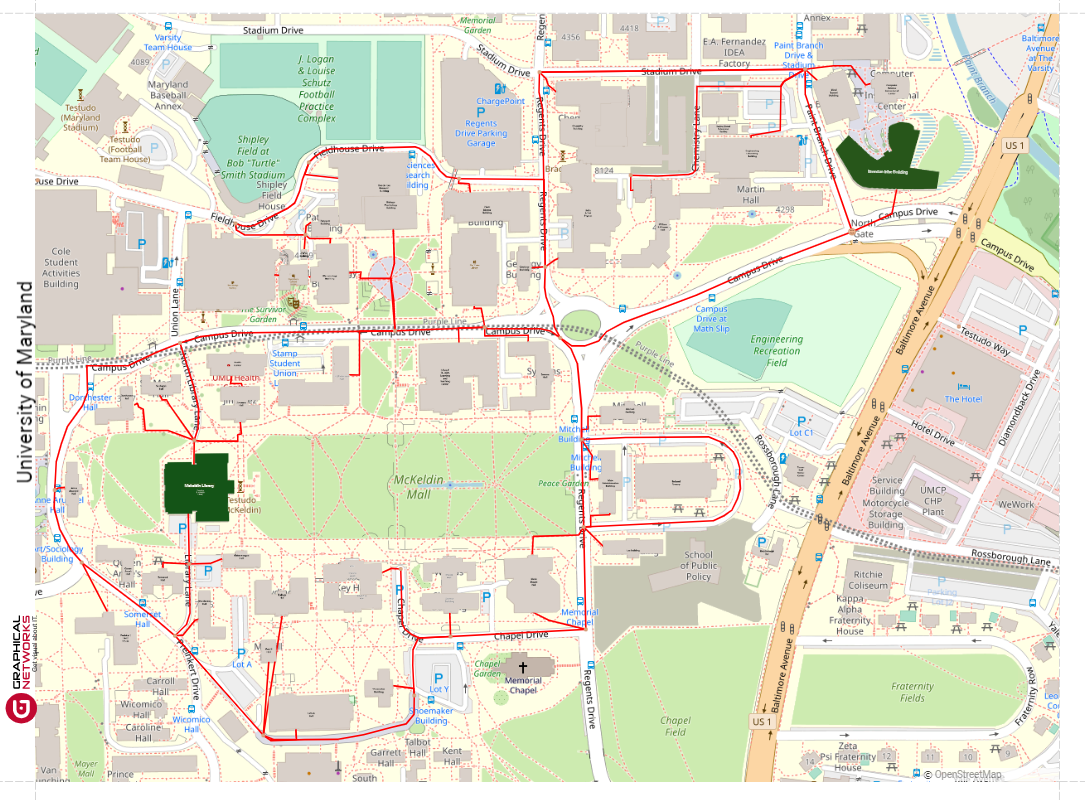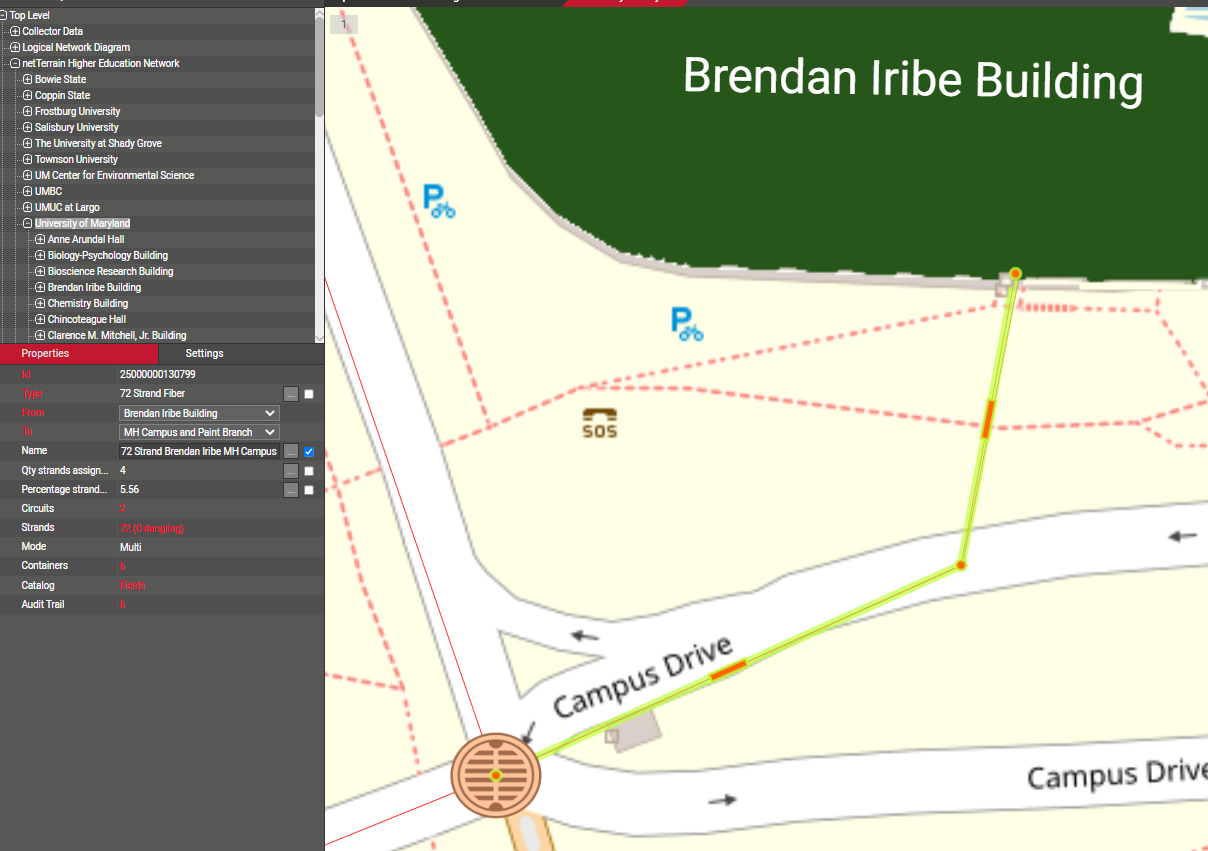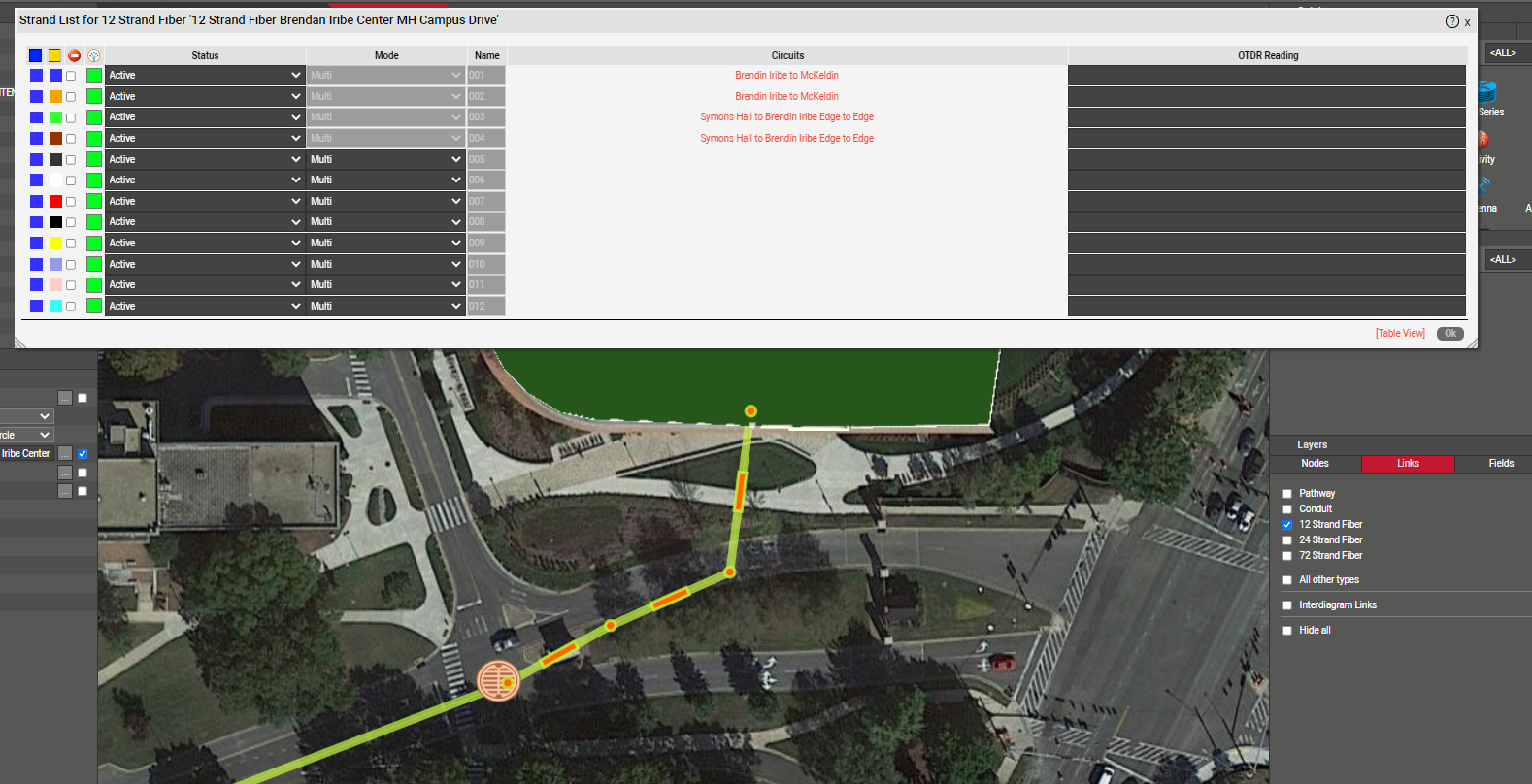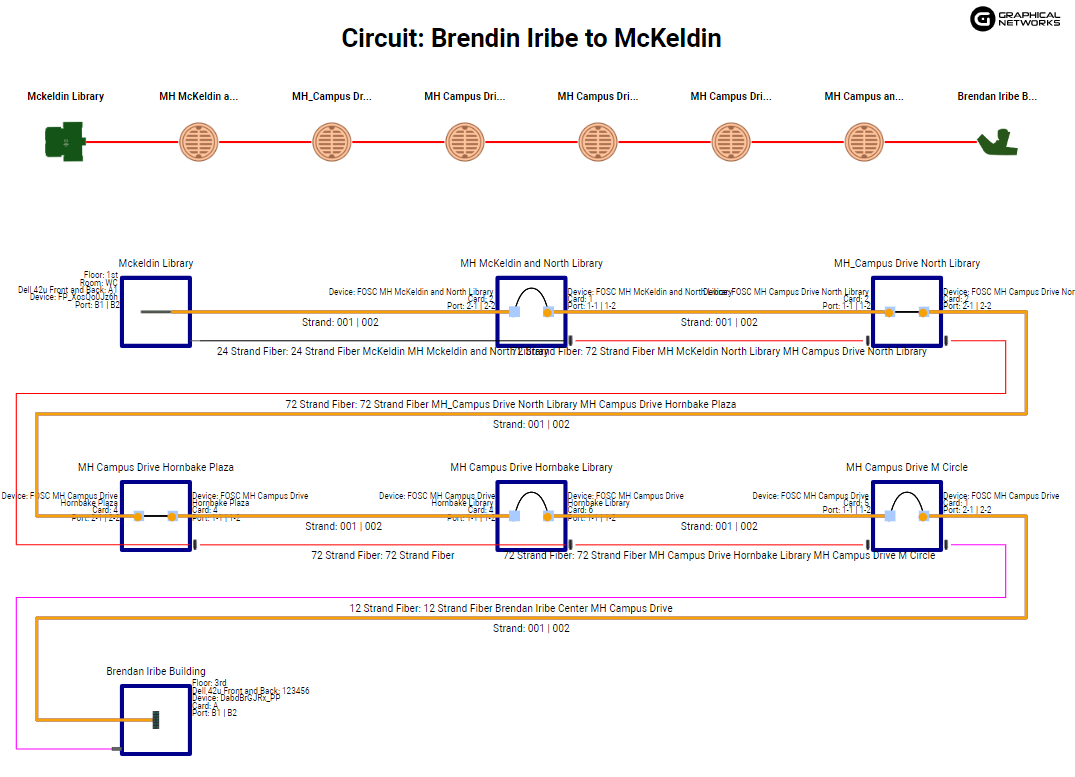
Do you need to document your fiber network? Here’s some bad news: don’t expect it to be easy. You’re probably thinking: “Wow, that’s a positive note to kick this blog off on, right? Please continue. I’m really excited now…!”
Allow me one more minute to make my case:
Fiber Documentation: The Good News
Ok, ok…maybe it won’t be too bad: it really depends on what you are defining as your fiber documentation project. For instance: maybe all you care about documenting are the pathways — as in “What path or route is my fiber taking — building to building, building to handhole to building….?” You get the idea. You just want to document a pathway, conduit or fiber cable and see how it runs across the map.
 An example of pathways/conduit paths/ etc.
An example of pathways/conduit paths/ etc.
This image shows how the fiber runs or where it runs. In fiber mapping software like netTerrain OSP, you can have defined fiber cables of course with details about the fiber:
So, I’ll be honest: the “pathway” or “conduit” type documentation of your fiber (conduit, fiber, or duct banks) is not really too hard to get into: this is really where you typically start in a fiber documentation project: this type of documentation can be a light load. In fact, you may have this documented already — maybe in AutoCad, ESRI or Google Earth. But — perhaps those tools are overkill for the task or underkill depending on what the requirement is. Some tools make it easy with drag-and-drop object placement or even via an Excel/CSV import….
Fiber Documentation: The Not So Great News
But now, onto the hard stuff…
When I say hard stuff, I’m usually referring to documenting stuff like fiber cable and strands. It’s not the documentation in a tool that’s hard — it’s usually the lack of data to begin with that’s the real tricky part. If you have bad data, or incomplete data, or no data, what do you do?
Well, for pathways: someone on your team probably has enough knowledge in their head already that they can just build it on the fly. But when you need to document on the strand level, that level of detail is not usually something someone just has in their brain. Getting this information may require an audit which is no small task. As you know, going out to a site or manhole or hand hole can be a very time-consuming process.
Hopefully, you have data that is in good shape and can be imported into a tool. If not, then you need to factor in the audit of data. You could take a long-term approach — where you build or capture data as changes or new installs occur. But if you need to do something quickly, it will be a much larger task to take on.
Fiber Documentation: The Bad News
Unfortunately, don’t expect to do auto-discovery of passive devices and equipment. Automatic discovery is for devices that can respond to a query using something like SNMP. So, automation of fiber documentation is not really an option. So back to expectations: be realistic, both in what you can do in the short term and what can be done over the long term. You don’t have to do it all at once in a short period of time.
Unless, of course, you have been tasked with this type of project with a specific end date. In that case, you will need to know that the costs for such an effort could be high if you’ve got to do some audits to capture the data you’ll need.
Fiber Documentation: Software
To help manage expectations, after you get past the whole ‘do we have data issue?’, your next step will be to review and demo software products. This is where you want to start.
What should you expect from the tool you may want to use to document your fiber? You could use something that is built more for GIS or you can get something that’s made for OSP/Fiber documentation. GIS software you may already have – which sounds great on paper, but the truth is that it’s not usually specifically suited for OSP/Fiber documentation projects and you’ll likely have to get software specifically for mapping your fiber.
There are a few out there (such as our fiber mapping software — netTerrain OSP): so, test drive them, ask questions and see what your options are. Is the product our company makes the best? Of course it is! But that’s my opinion. And guess who pays my bills? In reality the best solution is the one that will work for you and in your process and the one your team feels most comfortable with. Hopefully, that may be ours – but not always. That’s ok. As long as your expectations are met, that’s what really matters in the end.
Bottomline
When you’re undertaking a fiber documentation project, it’s not going to be an easy walk in the park – you may have to walk through a park to get your data. That being said, there are some parts that will be easier — documenting what you already know, for example.
If you can get your documentation done when you do new installs or changes, little by little, this is a low-key approach that doesn’t require the expense and time of a full-scale audit. If, however, you’re under a deadline, you’re probably going to have to do an audit.
The bottomline is that, whatever it takes to get your documentation done, it’s worth it in the end — knowing what you’ve got, where it is, and what you need simplifies your workload, helps you get hours of work done in minutes (no more heading out to the field every time you need a question answered) and ensures you don’t lose valuable information due to employee turnover.


